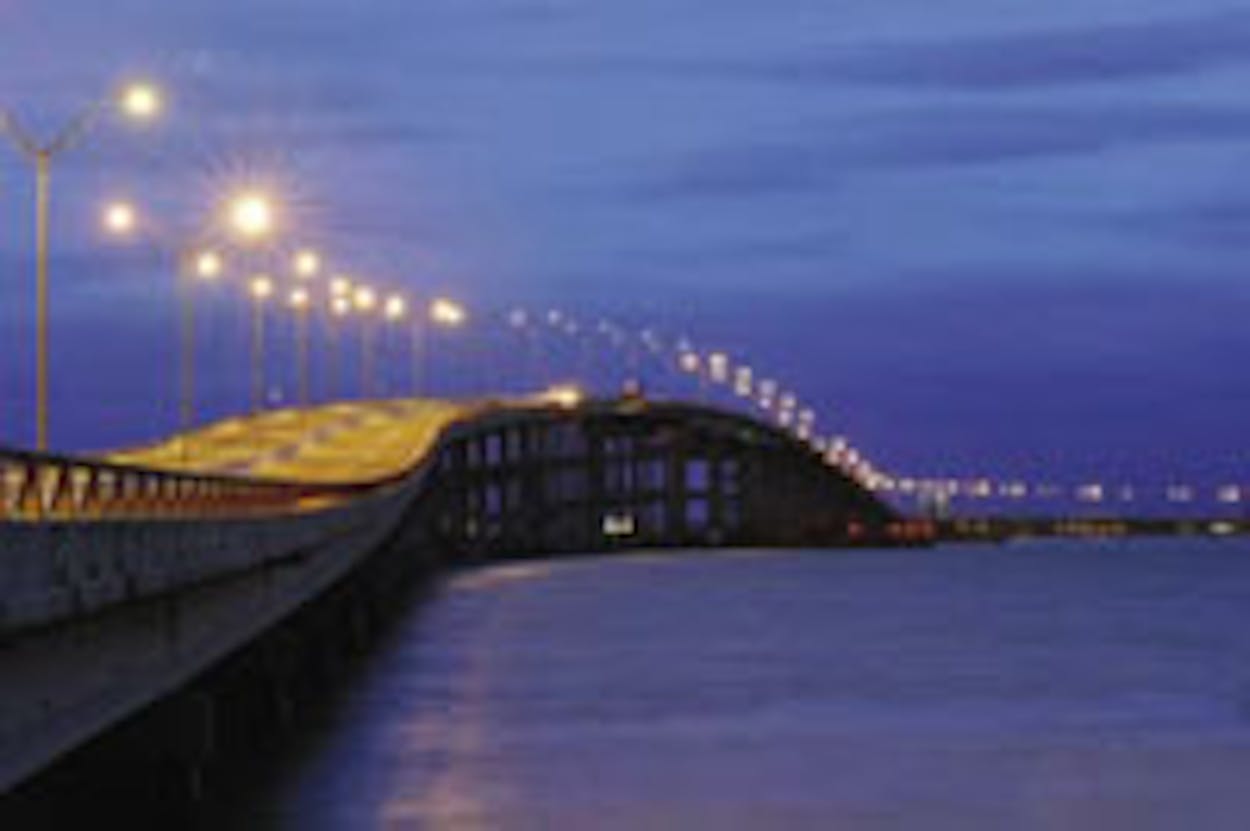THERE’S THE CAUSEWAY,” I announced as Mom and I rounded the bend near Laguna Vista on a Thursday in December. I’ve said this hundreds of times when I catch my first glimpse of the massive bridge that connects South Padre Island, where my parents live, to the mainland. “All put together again,” I added, a bit apprehensively. This would be my first time on the Queen Isabella Causeway since a barge struck it in the early-morning hours of September 15, causing a section of it to collapse—a catastrophe that killed eight people. Up close, I could make out the new part; the concrete was much whiter. And nothing happened, of course; we made it across the bay in one piece. “That took us about two minutes,” I said, remembering that, back in October, the lines for the ferries were so long it took my husband and me two hours to get from South Padre to our car in a Port Isabel parking lot.
The causeway reopened on November 21, one month ahead of schedule and not a day too soon for the island’s shop owners, residents, and workers. “The accident has impacted lots of businesses worse than we expected,” Dan Quandt, the executive director of the South Padre Island Convention and Visitors Bureau, told me. “The construction industry was badly hurt. They couldn’t get any materials over here.” But now things seemed to be getting back to normal. Crews hammered away on the frames of new houses and condos. Christmas lights decorated storefronts and houses. Snowbirds were beginning to arrive and settle in for the winter months, and locals were going to movies and eating out. It was almost as if the causeway collapse had never happened. Sure, there were “Sale” signs in most shop windows, few tourists walked the main drags, and motel rooms could be had cheap, but winter is always slow here.
Beneath the surface, though, the town and its residents just weren’t the same; there was a feeling of anxiety in the air. Gone was the smug notion that South Padre Island was a place where everyone wanted to be. The island had been humbled. With the causeway out, it became all too clear just how isolated South Padre really is—how dependent on services and people from the mainland, how reliant on tourists and the money they spend. The locals seemed more helpful than usual, aggressively trying to make a sale or get that extra tip. They had a needy look in their eyes.
“The day before the bridge opened, I said good-bye to all of my ferry buddies,” one of my mother’s friends said when I stopped by to visit. “I don’t see any of them anymore. Everyone is in their own little world again, in their cars.” She told me about one of her friends, a survivor of the causeway collapse, who had just made her first trip back to the island. “She rode in the backseat,” she said. “She still won’t drive.”
On Saturday, as my mother and I raced back and forth across the causeway running errands and shopping for the holidays, oblivious to the people in the cars beside us, I thought about the camaraderie that her friend missed and the irony of it all. I thought about what the woman who drove off the bridge must have felt when she hit the cold water in the middle of the night. And I thought about the timing of the disaster. The causeway collapse would have been headline news in normal times, but since it happened four days after September 11, it got buried, as if it wasn’t important.
Of course, we knew better.







